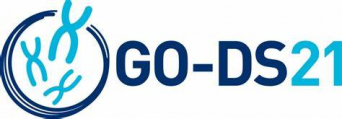 GO-DS21
GO-DS21

Gene overdosage and comorbidities during the early lifetime in Down Syndrome
The genetic code our body requires to synthetize all its proteins is located on 23 paired chromosomes. All cells carry this entire code, but certain cells express specific proteins according to their functions. Down's syndrome (DS), also known as trisomy-21, is a genetic disorder in which a person has three copies of chromosome 21 instead of the usual two. DS is associated with a high risk of both severe obesity and intellectual disorder. On the hypothesis that the locus may be on chromosome 21, the EU-funded GO-DS21 project is investigating the genetic mechanisms of this comorbidity. For this, GO-DS21 establishes the following objectives:
1. To determine age-related comorbidity patterns observed over the early lifetime (before age 45) in persons with Down syndrome,
2. To identify specific physiological biomarkers, and regulatory and epigenetic signatures in human, cellular and animal models,
3. To decipher the contribution of environmental factors (stress, diet, exercise) to trisomy 21 obesity/ID comorbidities in preclinical models,
4. To investigate the effects of overdosage of three Hsa21 candidate genes (DYRK1A, MRAP, NRIP1) to explain comorbid patterns in mouse models,
5. To integrate multilevel data from human patients, preclinical and cellular models across different spatial and temporal scales of biological complexity using computational biology models and machine learning approaches,
6. To design new therapeutic interventions to reduce the penetrance of comorbidities in preclinical models.
The outcomes of the GO-DS21 project are likely to benefit patients with Down's syndrome and the general population.

